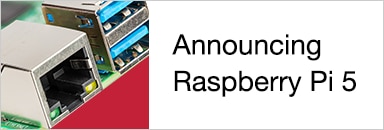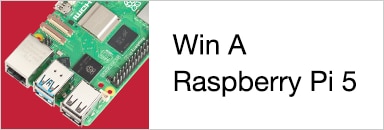Hello Everyone.
I thought I'd help any other newbies by describing the problems I had setting up my Raspberry Pi 2, and how I finally solved it. This is my first Blog Post, so please bare with me.
I want to state that I most of my computer experience is Windows-base, and most of my Linux experience is web- or GUi-based. In addition, I think that the Raspberry Pi (and the whole Maker & IoT movements) are the most exciting things I've see in years.
My Pi came in the mail yesterday, and I felt like a kid on Christmas morning. After putting it in a small case (by C4 Labs), scrounging up the cables, power adapter, a monitor, and wireless keyboard from another computer, moving the Raspbian image to the MicroSD card, the system booted-up without any problems. Really. It took longer trying to squint at the tiny writing on my old Motorola cellphone charger than it did to boot. I practically kissed it.
The rest of the evening went well enough. I played around for a bit; trying out some of the included applications and even installed a couple small packages - tree and midnight commander. Soon, however, my wife began asking for her monitor back. A headless system was in order. A quick search found the VNC (Virtual Network Computing) page, Raspberry Pi Documentation > Remote- Access > VNC
It was well written and easy to follow. I was caught off guard, however, when TightVNC started asking for passwords, and used something silly and weak. Even so, in 30-40 minutes both vncserver and the Windows client were up and running. It would have been quicker if I didn't keep using the "back-slash" on the Pi and the "forward-slash" on Windows. I don't know if I'll ever get the hang of that.
The password still bothered me. Preferring something stronger (and less cute), I followed the advice on: Get It Fixed: How to change VNC Server password on Linux
It worked like a charm. Note that any real strong password just get truncated to the first eight character.
Day Two.
Wanting to automate the VNC service at boot-time (so I didn't need to move HDMI cables just to login first), I followed the remainder of Raspberry Pi Documentation > Remote-Access > VNC
I evencreated the script from the VNC client; and thought I was hot stuff. Then the problems started. The dependency-based boot sequencing command wouldn't work in a VNC. Nor a SSH. I had to grab my wife's monitor again. The command worked but I had to reinstall the password. Okay. I used my new and improved password and continued on. It didn't work.
I rebooted. I re-ran vncpasswd. I rebooted. I re-built the script. I reboot some more. I checked my spelling (admittedly, quite bad). I switch back and forth, between console, and VNC from Windows. I could either get the VNC working from Windows, or have the boot sequence start the VNC, but could not connect. After three hours, and much gnashing-of-teeth, I was planing on re-imaging the MicroSD card. Giving it one last try, as root, I opened /etc/init.d/passwd in the nano text editor. This is a one word file with the password in it. It had one word of eight random characters in it. I thought that I had read that the file should have been un-encrypted; but running out of ideas, I tried changing it to the desired password....
I need to take a moment to mention that I am from the United States. Also, one of the characters in my "strong" password is the "at symbol". It seems, either through my exuberance (most likely) or some quirky re-setting of defaults, that my keyboard layout was set for UK, not US. While they may both be QWERTY, the "Shift+2" on the Pi console keyboard typed the "double apostrophe", yet the VNC/Windows keyboard typed the "at symbol". Who knew?
Hey, it's not like I crashed a Mars orbiter because I used non-SI units instead of SI units.
Everything is up and running, now; but it still feels like my Pi just gave me a big wet Raspberry.
~Michael








